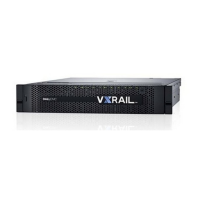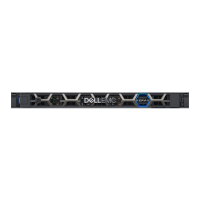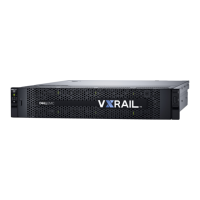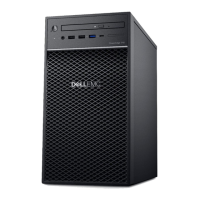Next steps
If all troubleshooting fails, see the Getting help section.
Troubleshooting iDRAC Direct (USB XML
configuration)
For information about USB storage device and appliance configuration, see Integrated Dell Remote Access Controller User's Guide at
Dell.com/idracmanuals.
Steps
1 Ensure that your USB storage device is connected to the front USB Management Port, identified by icon.
2 Ensure that your USB storage device is configured with an NTFS or an FAT32 file system with only one partition.
3 Verify that the USB storage device is configured correctly. For more information about configuring the USB storage device, see
Integrated Dell Remote Access Controller User's Guide at Dell.com/idracmanuals.
4 In the iDRAC Settings Utility, ensure that USB Management Port Mode is configured as Automatic or iDRAC Direct Only.
5 Ensure that the iDRAC Managed: USB XML Configuration option is either Enabled or Enabled only when the server has default
credential settings.
6 Remove and reinsert the USB storage device.
7 If import operation does not work, try with a different USB storage device.
Next steps
If all troubleshooting fails, see the Getting help section.
Troubleshooting iDRAC Direct (Laptop connection)
For information about USB laptop connection and appliance configuration, see the Integrated Dell Remote Access Controller User's Guide
at Dell.com/idracmanuals.
Steps
1
Ensure that your laptop is connected to the front USB Management Port, identified by icon with a USB Type A/A cable.
2 On the iDRAC Settings Utility screen, ensure that USB Management Port Mode is configured as Automatic or iDRAC Direct Only.
3 If the laptop is running Windows operating system, ensure that the iDRAC Virtual USB NIC device driver is installed.
4 If the driver is installed, ensure that you are not connected to any network through WiFi or cabled ethernet, as iDRAC Direct uses a
non-routable address.
Next steps
If all troubleshooting fails, see the Getting help section.
Troubleshooting a serial I/O device
Prerequisites
Steps
1 Turn off the appliance and any peripheral devices connected to the serial port.
2 Swap the serial interface cable with a known working cable, and turn on the appliance and the serial device.
If the problem is resolved, replace the interface cable with a known working cable.
3 Turn off the appliance and the serial device, and swap the serial device with a compatible device.
4 Turn on the appliance and the serial device.
Next steps
If the problem persists, see the Getting help section.
132
Troubleshooting your appliance

